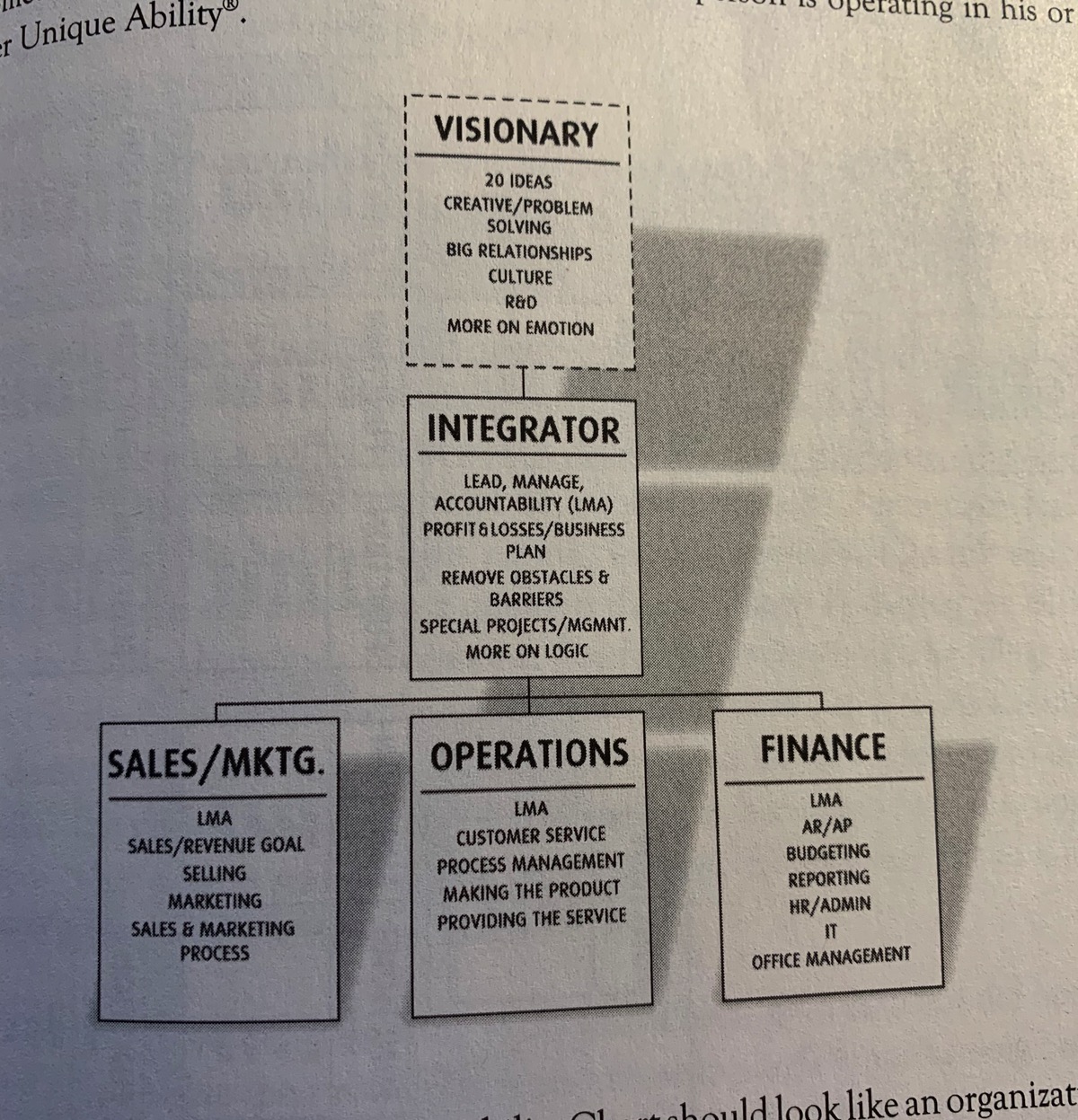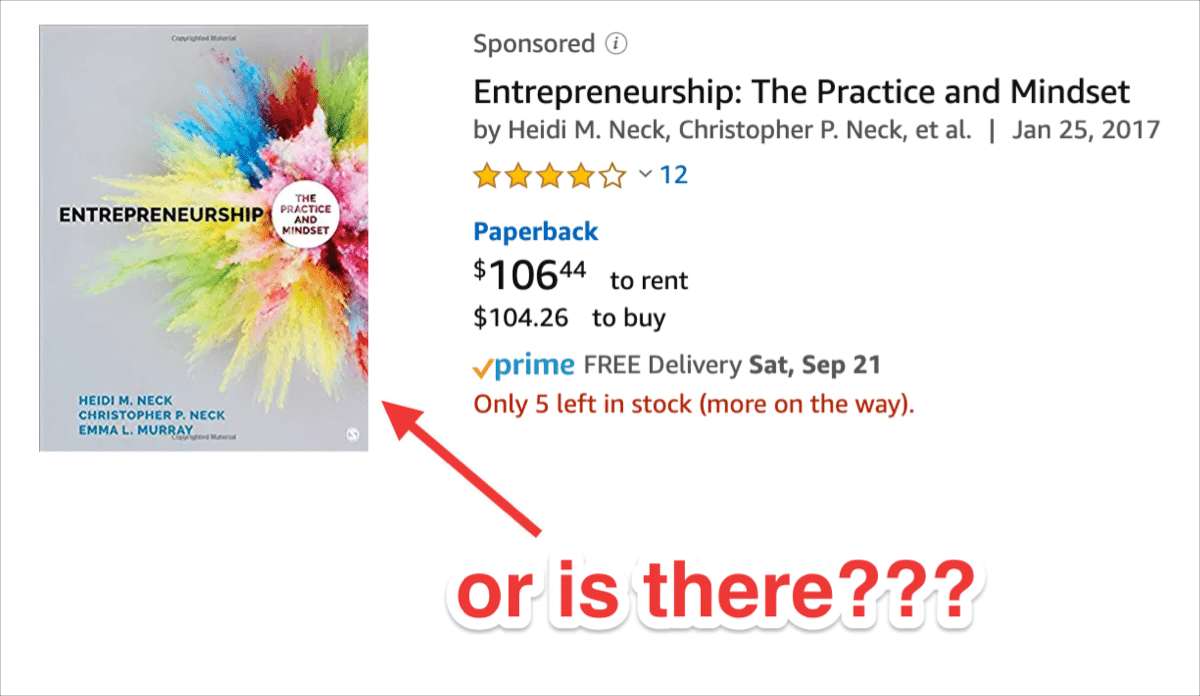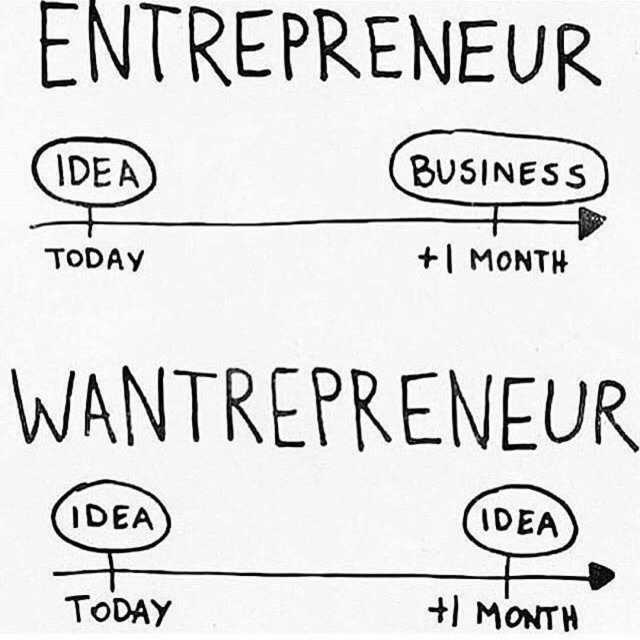This is the last leg of the Ownership Bottleneck Series where we answer the penultimate question: What’s the owner’s role?
But before we dig in, in Part 3 of this series, we spent a bit of time talking about, well… our feelings and stuff.
Specifically, why it so often feels isolating and lonely as an entrepreneur. The most accountable, the least vulnerable, and often the most insulated from reality in the organization.
Today, we’re going to revisit and explore this idea from another angle.
Don’t worry, not the “lay back on the leather couch and go over your childhood with a fine-tooth comb” type exploration…
But in a more literal and pragmatic sense.
It’s lonely at the top for another reason:
Because your highest best contribution isn’t like that of anyone else on your team.
If you do all of those wonderful things we’ve been preaching for the last three weeks (delegate, build your team, hold them accountable) your day-to-day work is going to look far different than it does today.
So I’m gonna do it again… and bring up my boy Gino Wickman and Traction.
Fun fact: To date, I’ve read this book 6 times cover to cover.
And if you also choose to partake, you’ll eventually come across this doozy of an image on p. 97 that perfectly illustrates why it can feel “lonely at the top,” but at the same time necessary and important that you get there.

The true role of the operating brewery ownership: that of the Visionary/Integrator duo.
And to be clear, it may be the case that you’ll have additional co-founder/co-owners in other seats… but it’s the yin/yang of the Visionary/Integrator mix that is very different than what most of us perceive the roles at the top to be. (And yup, there’s an assessment to identify which one fits your personality).
The Visionary should be responsible for Big Picture ideas, R&D, seeing around the corner, acting as the face of the company…
The Integrator is more connected to the day-to-day, but still is in a league of their own, responsible for facilitating the smooth function of the organization as a whole (and creating space for the Visionary to do their thing)…
All of this means that no one is going to be doing the work that you’re doing.
Sales will do sales.
Marketing will do marketing.
Production will do production.
And they all have their hands in the day-to-day activities that make the brewery go round.
You? Not so much.
Is this a good thing and what you’d always hoped would happen? Yes.
Is it what you expected and easy to transition into? Hell no.
This last portion of the Ownership Bottleneck Series is dedicated to thinking through this problem:
- What happens when you do manage to get yourself out of the grind?
- Where do you fit in now so that you can continue to drive the brewery forward… without stepping on toes and mucking up the momentum?
- And how do you do all of that so that you still feel in control of your business and connected to your people?
Let’s get into it.
The Owner’s Job
There is no handbook for entrepreneurship.

Yes there are approximately 18 million books you can read, but when it comes down to it…
You either got it or don’t.
That fire-in-the-belly compulsion to build something, dog-on-a-bone level of commitment, and one single speed of operation… grind.
Now to be clear, those qualities are both big strengths AND big weaknesses. And I’ve been in the throes of all of those myself for the last 17 years.
Which means I’m speaking from direct experience when I say that the problem with making this transition that we’ve been talking about is that, unless redirected, all of this excess drive and energy that constitutes you the entrepreneur… starts to spill over in counterproductive ways.
You start to meddle in your team’s workflow.
You start dreaming up new product lines and facilities.
You start pursuing crazy, out-of-left-field ideas that drive everyone nuts.
It’s just as The Scorpion and The Frog teaches us…
A scorpion asks a frog to carry it across a river. The frog hesitates, afraid of being stung by the scorpion, but the scorpion argues that if it did that, they would both drown. The frog considers this argument sensible and agrees to transport the scorpion. The scorpion climbs onto the frog’s back and the frog begins to swim, but midway across the river, the scorpion stings the frog, dooming them both. The dying frog asks the scorpion why it stung, to which the scorpion replies “I couldn’t help it. It’s in my nature.”
Background: I am currently transitioning out of the “glue” role myself and moving into a visionary role.
Am I ready for this transition… No.
Is it in my nature to resist… Yes.
Is it uncomfortable… You bet.
Teaching even a middle-aged dog new tricks isn’t exactly easy.
When I was ready to make the change I looked to my replacement glue and said “If we do this, how will I fill my time?”
We came up with a plan, and my new role would include the following:
- Closer
- Big Problem Solver
- Developer of new ideas
- Maintainer of key external relationships
- Lifetime learner and researcher
- Vision creator and protector
When he presented me with these, my first reaction was: “What the hell are you talking about? LOL.” Over time we hashed out what each of these responsibilities would look like.
And as it turns out…
These responsibilities are in fact the perfect outlet for the entrepreneurial mind.
They require a productive use of that creative energy that also fits in with the ground-level objectives of (in your case) the brewery and allows the leadership team to maintain the autonomy and accountability you worked so hard to create in the first place.
The Point: By pursuing this goal, you’re not engineering yourself out the business or putting yourself out to pasture… but instead creating the framework for you to be MORE original, MORE innovative, and MORE of an evangelist for your brewery.
Next up, we’ll walk through these responsibilities in more detail, and discuss how you can apply them to your brewery.
The Big Idea Guy
Alright, let’s address this “big idea” concept, because it gets misinterpreted.
The truth is, I usually hate Big Idea Guys and Gals… unless of course, they have been wildly successful in a previous life.
But what I mean by that is most people in leadership roles fancy themselves as Big Idea Guys.
They want to dish out orders, kick back, and watch the business grow.

It doesn’t work that way! You know this.
Because business owners like this suffer from the same disease as the dad-bod insurance adjuster at your wife’s friend’s dinner party that claims he had the idea for Uber back in 2005:
Most ideas are shit.
It’s the execution that brings them to life.
On the flip side of the coin though, brilliant ideas multiply the effectiveness of whatever you end up executing. And since you’ve now got this incredible team and supporting structure that can execute on your ideas like a well-oiled machine… there does come a point when you need to step back and start looking at the big picture.
That’s what I mean by taking on the “big idea” role. Here are some suggestions:
- Be the Big Problem Solver. Plenty of problems are bigger than the day-to-day and require a 10,000 ft. view to lay out potential solutions. This is where you come in and take the load off of the team so that they can get back to work as you work on a solution that you have the perspective and creativity to see. With time to think ahead, you can also start to play out scenarios and identify problems ahead of time. This includes risk management, so that the brewery doesn’t “step in a hole” we didn’t see coming. Or how about identifying internal and external synergies that can cut out vast swaths of cost, time, and hassle and increase profitability. Sky’s the limit here.
- Be the New Idea Developer. What are our capital expansion opportunities? Where can we invest? Which markets should we target next, and which will overextend us? What should our portfolio look like 1 year, 3 years, 10 years from now? With the team and mission clearly established, you can free yourself to brainstorm, think ahead, and throw ideas against the wall knowing that you have a built-in filtering mechanism that will maintain the organization’s focus and pick and choose the right ideas to act on.
This sounds nice. But how?
One practical way to do this: STOP ANSWERING EMAILS.
Like seriously, finish this very important email of course… but then get out of your inbox and away from your computer for a second.
Ignore. Delegate. Go off the grid.
Whatever you have to do, first create some space away from the thing that brings you right back into reactive mode. And block off some thinking time.
Then bring those ideas to your team. But it’s not like before this time. Because they know the mission and have the authority to decide what to execute. So they’re not afraid of being pulled every which way, yanked around by your whimsical mind.
You now provide the consistent spark that injects energy back into the system and drives the brewery further towards where you’re intending it to go.
And THAT’S what a Big Idea Guy should be.
Always Be Closing (And Building Relationships)
One of my favorite movies of all time is the year 2000 hit Boiler Room.

Vin Diesel was such a bad ass in that film. While his intentions were ill-willed, he sorta had a valid point when it comes to sales:
Whether or not a deal gets done goes far beyond product, reputation, and dollars and cents…and is instead dependent on factors like confidence, framing, FOMO, hype, scarcity… you know, the “dark arts.”
In reality though, the power of the more subtle side of sales can be harnessed for both virtuous and nefarious purposes. It’s just a tool, at the end of the day.
Steve Jobs was the master at this. The hype-man for Apple’s products, particularly upon is triumphant return. And although he was notorious for his “reality distortion field” and hyperbolic statements, he was also universally admired because the show was backed by an undeniable product and customer experience.
I mentioned that two of my roles were now Maintainer of Big External Relationships and Closer.
What this means to me is that I can direct more of my time, focus, and energy to thinking about customer service and selling. And the same should likely be true of you.
Most of my advice to owners these days is to dial the clock back to when you opened and give me 6 months of selling and relationship-building like you did back then.
Some ideas:
- Re-strengthen account relationships and show distributors that not only are you still around, but that your product is in demand, your facilities and equipment have expanded, you’re doing new and exciting things with your portfolio and brand…
- Ride along with your young reps to show them how it is done. Inject energy back into a process that may now feel a bit tired and mechanical. Show them that beyond the sales “process” there’s an intangible human element that often makes the difference.
- Get your sales swagger back. You now have permission to fully evangelize your brand and product, with full confidence that you have the team and systems to back it up. Back then you did this out of necessity and you convinced people to buy into the dream. Today, the dream is alive and well, and now we just need you to tell them about it.
With time, energy, and mental bandwidth freed up, you now have the power in your hands to create excitement and action in the brewery again.
The only question now is:
Are you willing to wield this newfound power?
A Permanent Student of the Craft
I told you I didn’t want to turn all of this into a leather couch struggle session.
Because lord knows, we do not need to give us Gen X-ers and elder Millennials more ammunition for unwarranted self-reflection.
But with that said, I do want to ask you to think back to when you first started your brewery…
Wide-eyed about the endless potential.
Excited by the opportunity to invest in a tangible asset that would pay dividends for years to come.
Emboldened by the decision to pursue the work that you were put on this Earth to do, on your own terms… or something like that.
This wraps up me yapping about how to fulfill that original promise. We’ve walked through the major pieces of the puzzle:
- Delegating and relinquishing control to a capable and accountable team pushing forward your objectives.
- Putting together that team in a way that facilitates both structure in key roles and the flexibility to pivot as you grow.
- And finally, holding the team and yourself accountable for fulfilling the core responsibilities of your respective roles so that you can make the transition into the active ownership role you WANT to occupy… and not just what happens to have fallen into your lap as the dust has settled.
Now I want you to bring all of that full circle and put it into context.
Removing yourself as the bottleneck isn’t just a way to support the growth and evolution of the business.
It’s your path to returning to that original pure intent. Clearing away the fog, and viewing the brewery with fresh eyes. Becoming, again, a student of the craft.
Believe me, I know it’s all too easy to get swept up in the labyrinth of responsibilities you’ve needed to take on your shoulders in order to get where you are today. But maintaining a clear vision of where you’re headed, and how to get there is the guiding light that will keep you on “the path” towards your ultimate goal.
We help owners make these transitions.
For us, it starts with the numbers.
It develops throughout the growth process.
And it culminates in Head of the Class, high-performing, profitable breweries that serve the consumer in the way they had originally intended.
This may not be the path you take.
But for those of you who it is right for, we welcome you to join us.